- Home
- Peter Ackroyd
Revolution, a History of England, Volume 4
Revolution, a History of England, Volume 4 Read online
Contents
List of illustrations
1. What do you think of predestination now?
2. A bull or a bear?
3. The idol of the age
4. Hay day
5. The prose of gold
6. Waiting for the day
7. The great Scriblerus
8. The Germans are coming!
9. Bubbles in the air
10. The invisible hand
11. Consuming passions
12. The What D’Ye Call It?
13. The dead ear
14. Mother Geneva
15. The pack of cards
16. What shall I do?
17. Do or die
18. The violists
19. A call for liberty
20. Here we are again!
21. The broad bottom
22. The magical machines
23. Having a tea party
24. The schoolboy
25. The steam machines
26. On a darkling plain
27. Fire and moonlight
28. The red bonnet
29. The mad kings
30. The beast and the whore
31. A Romantic tale
32. Pleasures of peace
Further reading
Index
List of illustrations
1. Ceiling of the Painted Hall, detail of King William III and Queen Mary II enthroned, c.1707–14 (© Royal Naval College, Greenwich, London, UK / Photo © James Brittain / Bridgeman Images)
2. Portrait of Queen Anne, eighteenth century (Private Collection / Photo © Philip Mould Ltd, London / Bridgeman Images)
3. Portrait of John Churchill, 1st Duke of Marlborough, by Godfrey Kneller, seventeenth century © Private Collection / Bridgeman Images
4. The Battle of Blenheim on the 13th August 1704, c.1743 (© National Army Museum, London / acquired with assistance of National Art Collections Fund / Bridgeman Images)
5. Portrait of George I of England from the studio of Sir Godfrey Kneller, c.1754 (Photo by Apic/Getty Images)
6. Portrait of George II, eighteenth century (© The Trustees of the Goodwood Collection / Bridgeman Images)
7. Interior of a London coffee-house, c.1650–1750 (© Private Collection / Bridgeman Images)
8. Portrait of Sir Robert Walpole, eighteenth century (© Philip Mould Ltd, London / Bridgeman Images)
9. Portrait of William Pitt the ‘Elder’, later 1st Earl of Chatham (Private Collection / Photo © Bonhams, London, UK / Bridgeman Images)
10. Portrait of Prince James Francis Edward Stuart the ‘Old Pretender’, c.1754 (Photo by Print Collector / Getty Images)
11. Prince Charles Edward Stuart, known as ‘Bonnie Prince Charlie’ and the ‘Young Pretender’, c.1740 (Photo by Hulton Archive / Getty Images)
12. Emblematical print of the South Sea, illustration from Hogarth Restored: The Whole Works of the Celebrated William Hogarth, c.1812 (© Private Collection / The Stapleton Collection / Bridgeman Images)
13. The Spinning Jenny, invented by James Hargreaves in 1764, d.1870 (© Private Collection / Ken Welsh / Bridgeman Images)
14. A caricature of Gin Lane by William Hogarth, c.1750 (Photo by Culture Club/Getty Images)
15. A portrait of John Dryden by John Michael Wright, c.1668 (© Private Collection / Photo © Philip Mould Ltd, London / Bridgeman Images)
16. A portrait of Jonathan Swift by Charles Jervas, c.1718 (© National Portrait Gallery, London, UK / Bridgeman Images)
17. A portrait of Alexander Pope from the studio of Godfrey Kneller, eighteenth century (Private Collection / Photo © Philip Mould Ltd, London / Bridgeman Images)
18. A portrait of Dr. Samuel Johnson by Joshua Reynolds, eighteenth century (© Private Collection / Bridgeman Images)
19. King George III by Allan Ramsay, c.1762–64 (National Portrait Gallery, London, UK / Bridgeman Images)
20. Portrait of the Prince of Wales, late King George IV, c.1790 (Private Collection / Photo © Philip Mould Ltd, London / Bridgeman Images)
21. The Iron Forge, c.1772 (© Broadlands Trust, Hampshire, UK / Bridgeman Images)
22. The Ball, from ‘Scenes at Bath’ by Thomas Rowlandson (© Yale Center for British Art, Paul Mellon Collection, USA / Bridgeman Images)
23. A teapot from the Wedgwood Factory, Staffordshire, c.1775 (© Fitzwilliam Museum, University of Cambridge, UK / Bridgeman Images)
24. An engraving of the Boston Tea Party, 16th December 1773 (© Private Collection / Bridgeman Images)
25. A canvas of George Washington at Princeton, 1779 (© Pennsylvania Academy of the Fine Arts, Philadelphia, USA / Bridgeman Images)
26. William Pitt the Younger by Thomas Gainsborough, c.1788 (© The Iveagh Bequest, Kenwood House, London, UK / © Historic England / Bridgeman Images)
27. The Impeachment, or ‘The Father of the Gang turned King’s Evidence’, published by S. W. Fores in 1791 (© Courtesy of the Warden and Scholars of New College, Oxford / Bridgeman Images)
28. A portrait of Samuel Taylor Coleridge, c.1804 (© Wordsworth Trust / Bridgeman Images)
29. A portrait of poet William Wordsworth, eighteenth century (© Wordsworth Trust / Bridgeman Images)
30. An etching of The Ancient of Days by William Blake, c.1794 (© Private Collection / Bridgeman Images)
31. A watercolour of people taking the waters at the pump room, Bath, c.1784 (© Victoria Art Gallery, Bath and North East Somerset Council / Bridgeman Images)
32. The Promenade at Carlisle House, c.1781 (Private Collection / © Look and Learn / Peter Jackson Collection / Bridgeman Images)
33. A Modern Belle going to the Rooms at Bath, published by Hannah Humphrey in 1796 (© Courtesy of the Warden and Scholars of New College, Oxford / Bridgeman Images)
34. The Duchess of Richmond’s Ball on 15 June 1815 (© The Trustees of the Goodwood Collection / Bridgeman Images)
35. The Battle of Trafalgar, c.1805 (© Musée de la Marine, Paris, France / J. P. Zenobel / Bridgeman Images)
36. An equestrian portrait of Napoleon c.1810 (Photo by DeAgostini / Getty Images)
37. The Duke of Wellington at Waterloo, nineteenth century (© Private Collection / Photo © Christie’s Images / Bridgeman Images)
1
What do you think of predestination now?
The king had fled, in the face of an invading army. Even though James II had reached the safety of France and William, prince of Orange, was ensconced in Whitehall, it was not at all clear who was the true sovereign of Britain. So a ‘Convention’, half way between an assembly of notables and a parliament, was called at the beginning of 1689.1 Since no recognized king was readily available to call an election it was a somewhat hasty and improvised affair; but it was not without the most important consequences. It marked a revolution in the affairs of state.
The Convenion met towards the end of January 1689 to consider the respective positions of James and William; there was at once a conference on the meanings of a throne ‘deserted’ or ‘vacant’, a learned debate but one driven by the need to exclude for ever the absent king. The Commons finally declared that James II had ‘abdicated’, but there was no such term in law so this was essentially a legislative fiction. Yet there was no plausible alternative to the usurper’s rule. As an authoritarian Catholic, James had been the worst possible monarch for a strongly Protestant nation. The fact that a group of notables had asked William of Orange to intervene in an increasingly fraught situation had granted a measure of legitimacy to the prince’s easy conquest. Yet he could not be seen as a king by conquest; that would bring back horrid memories of William I, whom good republicans loved to hate. So he had somehow to
be proclaimed as king by right, a conveniently loose description that might cover almost any set of circumstances.
By the beginning of February a ‘declaration of rights’ had been composed by the members of the Convention. One of its clauses forbade the establishment of a standing army in times of peace, regarded as one of the most obvious tokens of arbitrary royal power. Other clauses tended in the same direction. Laws could not be executed or suspended without the consent of parliament; taxes could not be raised for the benefit of the Crown without parliamentary agreement; freedom of speech in parliament was paramount and, in the final clause of the declaration, ‘parliaments ought to be held frequently’.
The Declaration, later the Bill, of Rights was formally recited to William and to his consort, Mary, daughter of the deposed king; they sat in state in the Banqueting House and, after William had affirmed that ‘we thankfully accept what you have offered us’, they were proclaimed to be conjoint sovereigns. It was a delicate juggle. It could only be assumed that William had understood and accepted the Declaration as a prelude to his crowning, as William III, but he had not been pressed to any formal oath of assent. Many now believed, however, that he had been granted sovereignty by way of parliament. The divine right of kings had come to an end. Daniel Defoe declared later that parliament had ‘an Unbounded Unlimited Reach, a kind of Infinite attends their Power’.
William’s reticence on the substance of the declaration did not necessarily imply consent. He was by no means enamoured of its principles; it was a very English production, being almost entirely non-theoretical, but he knew well enough that it circumscribed his power. He said that he had no wish to confirm some of its clauses but that ‘the condition of his affairs overruled his inclinations’; later he complained that ‘the worst of all governments was that of a king without treasure and without power’. On the day after the marquis of Halifax tendered the crown to him in the Banqueting House he told the marquis that ‘he fancied, he was like a king in a play’. But he had to maintain his part at all costs.
A combination of gentry and aristocracy had in effect formulated a settlement that eliminated the threat of royal absolutism and protected property from arbitrary seizure. They were not interested in the idea of remedial legislation by parliament for the sake of social good or some benign notion of order. They wanted the rewards for themselves only. So was crafted what became known as the ‘glorious revolution’ promoted in theory by divine providence but supervised in effect by an organized elite, an aristocracy and oligarchy bolstered by the support of the landed gentry; the members of this elite would retain their power for the next 200 years.
The new order was bitterly opposed by those who believed that former oaths of loyalty to the deposed king could not and should not be broken; if the most solemn pact could be overturned, where could proper order and authority be found? The objectors, who refused to swear a new oath of allegiance to William and Mary, became known as ‘non-jurors’. Some of the most senior clerics in the country were of their number, among them William Sancroft, archbishop of Canterbury. Eight bishops, and 400 clergy, adopted his stance. At the coronation of William and his consort in Westminster Abbey on 11 April, the archbishop was absent; the bishop of London raised the crown. Sancroft himself was forced into retirement in the following year.
The non-jurors were the measure of a divided kingdom; many of them became Jacobites, or supporters of the exiled James, in spirit if not in practice. It cannot be doubted that loyalty to William was distinctly muted in many parts of the country, and that he was conceived by some to be a foreign king imposed in the first place by force. Yet what could be done? The crown was on his head. Indifference, or resignation, was the inevitable response.
The Convention was converted into a parliament by the new king, with the simple expedient of delivering a speech from the throne to both houses. In his coronation oath he had consented to govern according to ‘the statutes in parliament agreed on, and the laws and customs of the same’; it was a sign of the new balance in the constitution. Yet the relationship between Crown and parliament was not necessarily happy; in a further indication of their new power the members refused to grant William a revenue for life, and failed fully to fund his approaching campaign against France. They had learnt the unhappy lesson of the former king who had been able to support himself without their aid. William was as a result wholly reliant upon frequent parliaments to service his debts. Parliament now met every year, with sessions lasting for several months; general elections were held, on average, every two years. This quickened activity of course raised the temperature of the political atmosphere, encouraging what came to be known as ‘the rage of party’.
This was not to the liking of the new king who detested fractious politicians. He did not speak good English, and was in any case reserved in nature to the point of being sullen or morose. He always longed to be back in his native land, away from the hypocrisy and importunity of the English court. He hated pomp. His manner and appearance did not necessarily recommend themselves to his new subjects. He spoke slowly and briefly. He was by nature calculating, cool and methodical. Though he was of slight frame he managed to carry himself with authority; he was an asthmatic, however, and his conversation was interrupted by a continual deep cough. He soon removed himself from the fog and damp air of Westminster to the relatively healthy ambience of Kensington. He was generally severe, or even solemn, and was rarely cheerful; only with his inner circle of Dutch advisers did he relax.
It was rumoured at the time that members of his court were homosexual and that, in particular, two of William’s ‘favourites’, the first earl of Portland and the earl of Albemarle, had been granted half a million acres of land. The wife of Philippe, duke of Orléans and the French king’s younger brother, Princess Palatine Elisabeth Charlotte, asked if the court of William had become a ‘château de derrière’. Her husband, known as ‘Monsieur’, was a notorious homosexual; so she may have acquired her information at first hand. A verse was circulated that included the lines:
Let’s pray for the good of our State and his soul
That he’s put his Roger in the right Hole.
Gilbert Burnet, bishop of Salisbury and a firm supporter of the new dispensation, remarked somewhat mysteriously that the king ‘had no vice, but of one sort, in which he was very cautious and secret’. This might have been alcohol, but it is unlikely. It is also true that intimations of homosexuality can be found in any male-dominated militaristic court, like that of William III. As in most stories of royal homosexuality, however, there is no actual evidence to support the claim.
William was, in any case, a sincere Calvinist who upheld the strictest possible interpretation of preordination. That is why he possessed a sense of destiny. He had said to Burnet, after he had landed at Torbay ready to confront James II, ‘Well, doctor, what do you think of predestination now?’ He believed himself to be fated, in particular, to lead a war against the Catholic French king. It was the great cause of his life. His faith may also have provided the context for his bravery and fearlessness in battle. Certainly it influenced his explicit toleration for those dissenters outside the Anglican fold.
One of the first measures of the new parliament was a bill to introduce and to encourage religious moderation. The Toleration Act granted freedom of public worship, and legal protection, to dissenters. Over the next twenty years more than 2,500 chapels or conventicles were licensed for worship. It seemed just and right that William should indulge the inclinations of those believers who were, after all, fellow Protestants if not fellow Calvinists. This is the setting for the Methodist revival of the 1740s, but many in the larger body of Anglicans believed that the rights of the national faith were being overlooked; certainly, by the mid-eighteenth century, the orthodox Church was beset by apathy or indifference in the face of more enthusiastic creeds.
William had declared war on France in the spring of 1689. The principal reasons for the invasion of the previous year had been his i
ntention and desire to recruit the wealth and resources of England in his long campaign against French domination of Europe and, in particular, against French threats to the independence of the Dutch republic of which he was ‘stadtholder’ or head of state. This had been his guiding purpose for the last sixteen years. In 1672, in the face of French invasion, he had stated that he would die defending his country ‘in the last ditch’; in turn Louis XIV had described William as ‘my mortal enemy’. The French king wished to create a grandiose Bourbon empire, with himself at its head. He wanted to rule from Versailles. The sun king, or le Roi-Soleil, might rise all over Europe. If he conquered Holland, too, he would have defeated the strongest Protestant power on the continent. English ambitions were more simple. They agreed to William’s war in order to preserve themselves from the return of James II under French auspices; they did not wish to become, as it was said, ‘papists or slaves’. It was hoped that the war would be a brief one.
That hope was not fulfilled. William in effect now guided what became known as the ‘Nine Years War’ against the traditional foe; he became his own foreign minister and put together a coalition of other powers, including Spain and the Holy Roman Empire, for the attack. That ‘empire’ was in large part a loose confederation of independent princes who ruled the states of central Europe and who also feared French domination. Yet William’s war was only the prelude to a much larger and longer conflict. The war of England against France lasted for fifty-eight years and the long hostility only found its quietus at Waterloo in 1815. This prolonged culture of war changed the social, fiscal and political aspects of English life. Larger and larger armies were brought into operation. Taxes increased exponentially. This will be one of the stories of the volume.
William had already become disenchanted with his English parliament. In the spring and summer of 1689 he complained variously that ‘the Commons used him like a dog’ and that ‘he could not bear them’. The lines between the two largest parties, Whigs and Tories, had been carved in stone during the reign of James II. The Whigs were the enemies of popery and arbitrary government, and thus had attempted to limit royal power; the Tories had determined to defend the monarchy against the onslaught of those whom they considered to be republicans or rebels. Yet with the advent of William III, all had changed.

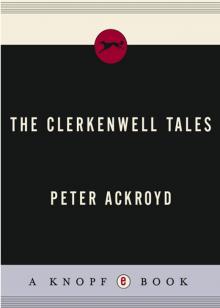 The Clerkenwell Tales
The Clerkenwell Tales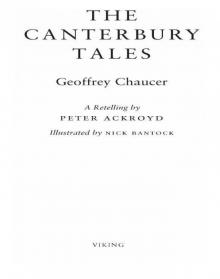 The Canterbury Tales
The Canterbury Tales J. M. W. Turner
J. M. W. Turner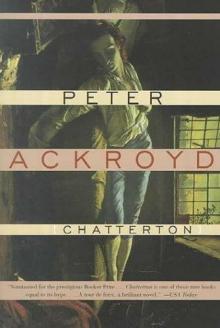 Chatterton
Chatterton The Canterbury Tales – A Retelling
The Canterbury Tales – A Retelling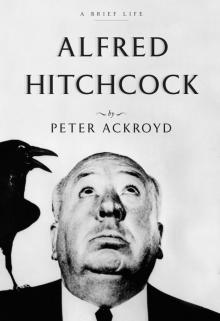 Alfred Hitchcock
Alfred Hitchcock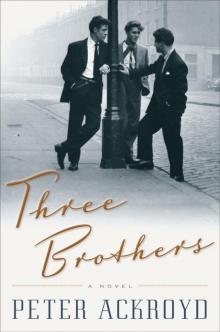 Three Brothers
Three Brothers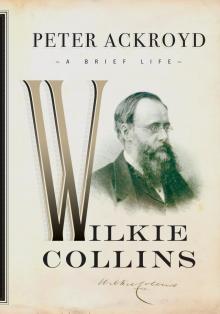 Wilkie Collins
Wilkie Collins Venice
Venice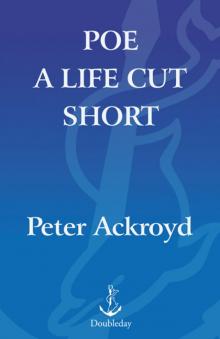 Poe
Poe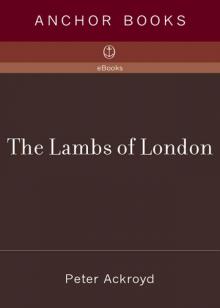 The Lambs of London
The Lambs of London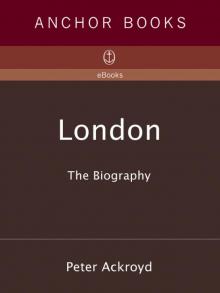 London
London Queer City
Queer City Revolution, a History of England, Volume 4
Revolution, a History of England, Volume 4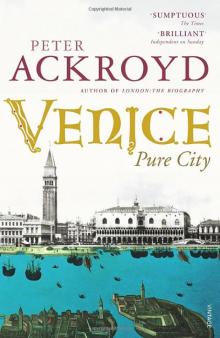 Venice: Pure City
Venice: Pure City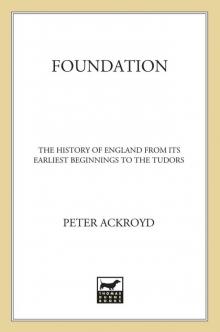 Foundation
Foundation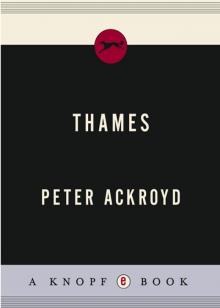 Thames
Thames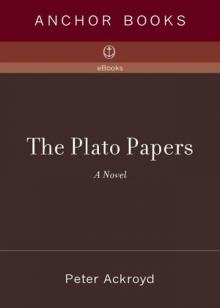 The Plato Papers
The Plato Papers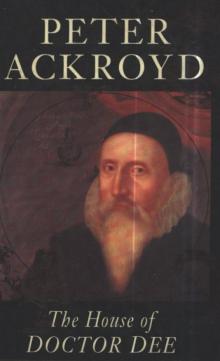 The house of Doctor Dee
The house of Doctor Dee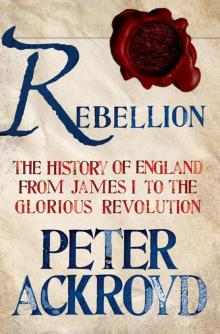 Rebellion: The History of England from James I to the Glorious Revolution
Rebellion: The History of England from James I to the Glorious Revolution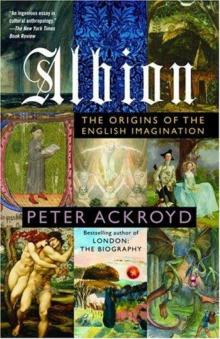 Albion: The Origins of the English Imagination
Albion: The Origins of the English Imagination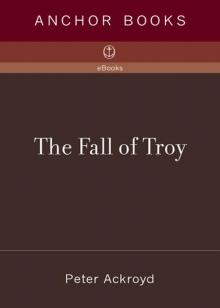 The Fall of Troy
The Fall of Troy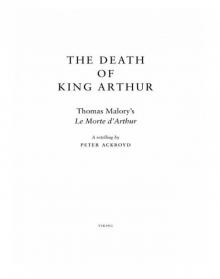 The Death of King Arthur
The Death of King Arthur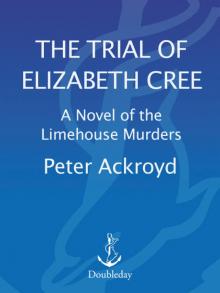 The Trial of Elizabeth Cree
The Trial of Elizabeth Cree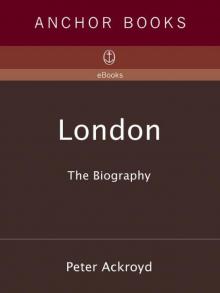 London: The Biography
London: The Biography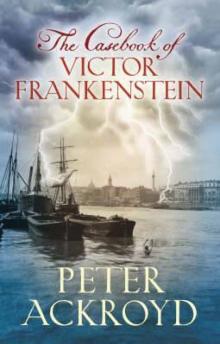 The Casebook of Victor Frankenstein
The Casebook of Victor Frankenstein Hawksmoor
Hawksmoor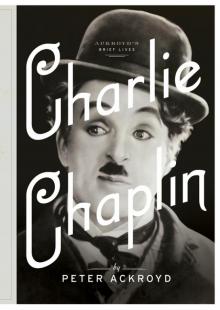 Charlie Chaplin
Charlie Chaplin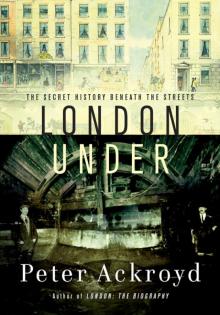 London Under
London Under